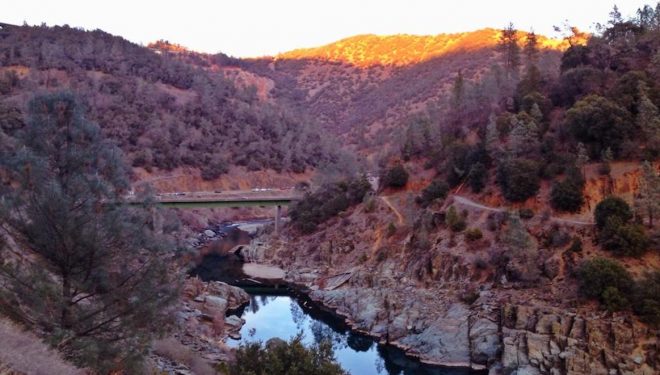
The Utah Court of Appeals ruled that an easement established under the 1866 Mining Act can be established upon the best information available and that interference with such a water conveyance easement, if proven at court, will entitle the aggrieved party to collect attorneys’ fees. [Allen Family Trust v. Holt, 2019 UT App 197 (Ut. Dec. 5, 2019).]
Factual and Procedural Background
The 1866 Mining Act was enacted in part to recognize water rights acquired by owners and predecessors of those rights that were acquired by local custom, laws and decisions of local courts. See, 14 Stat. 251-53 (codified at 43 U.S.C. § 661(1976)). The present case involves an easement to convey water from a neighboring party through ditches, which were alleged to have been constructed prior to 1896, to a parcel of irrigated ground in Section 34.
Ammon Allen originally settled the land in question in the 1890s and commenced construction of conveyance works in or around 1896, to divert water from what were colloquially known as Gardner Springs and Dan’s Camp to his property in Section 34. This water right was recognized in the 1948 Ogden River Decree, which held that Abner Allen [a successor] had a right to convey water from Gardner Springs and Dan’s Camp through an “unnamed ditch” to irrigate land in Section 34. By this time, the conveyance works ran through and across abutting lands now owned by the Utah School and Institutional Trust Lands Administration (STILA).
In 1963, Abner’s sons formed the Allen Ranch Company (ARC), which acquired right to Section 34 property and the water rights from Abner. ARC entered into a 25-year lease with STILA for farming purposes. The lease provided, among other things that “fixtures left on servient estate for more than one year after lease termination would become SITLA’s property,” however the lease was also made “subject to any and all valid and existing rights in [the servient estate].”
ARC dissolved in 1977 with the water being distributed out to the incorporators, but following some confusion as to title, the Parties more or less agreed that Ross Allen had 70 percent interest in the water right and Scott Allen had the other 30 percent. In or around 1979, Ross and his son David constructed a pipeline to improve conveyance of the water from Gardner Springs and Dan’s Camp to the Section 34 property for irrigation purposes. This pipeline generally followed the existing open ditch route across the SITLA property.
In or around 1998, SITLA sold the abutting land, which was ultimately acquired by the Millennial parties (Holt and Millennial Partners are collectively referred to herein as the Millennial Partners and are the appellants). The Millennial parties subsequently became concerned about the Allens (appellees) “gaining access to the property in an unregulated way to maintain the easement.” 2019 Ut. App. 197, ¶ 11. In the ensuing conflict, Millennial Partners sent letters to David Allen to try to assert control over access to the property, erected fences around the property, and eventually dug up and cut the pipes with a chainsaw to interrupt the conveyance of water to the Section 34 property. The District Court entered a stipulated judgment in this dispute with findings that Allens possessed a water right at Dan’s Camp and owned the conveyance system that was on the servient estate. Id.
Finally, in 2012, the Allens instigated the present lawsuit. They sought a declaratory judgment affirming that they own an easement to convey water through the servient estate to the Section 34 property as well as the pipe system. They also alleged that the Millennial parties unlawfully interfered with their water right and that the Millennial parties had forfeited their water right as the result of nonuse. Following a bench trial, the District Court agreed with the Allens that they owned a water right easement and that the Millennial parties had interfered with that water right. However, the District Court found that nonuse of the Millennial Parties’ water right had not been proven by clear and convincing evidence.
The Millennial parties now appeal the District Court’s rulings against them, and the Allens cross-appeal the District Court’s rejection of their water forfeiture claim. The Millennial parties raise numerous issues on appeal, including whether the District Court: 1) erred in finding that Dan’s Camp is a diversion point for the Allens’ water right, 2) erred in concluding that the Allens have a right of way pursuant to the 1866 Mining Act, 3) abused its discretion by reconsidering and reversing its own prior summary judgment ruling, 4) erred in finding that the Allens had not abandoned their easement and right to convey water from the Upper Spring diversion point, and 5) erred in finding that the Millennial parties interfered with the Allens’ water right and awarding attorney fees based on that interference. Despite the apparent complexity of these issues, all of them turn on whether the District Court properly found that the Allens have a current water right easement pursuant to the 1866 Mining Act that includes both Dan’s Camp and the Gardner Springs as diversion points.
The Court of Appeals’ Decision
On cross-appeal, the Allens argue that the District Court erred in concluding that the Millennial parties did not forfeit their water right under Utah Code section 73-1-4 by failing to put the water to beneficial use. “Whether a water right holder has put her water to beneficial use is a mixed question of fact and law, and we grant the District Court’s ruling significant, though not broad, discretion.” Salt Lake City Corp. v. Haik, 2019 UT App 4, ¶ 43, 438 P.3d 913. However, because water forfeiture rulings are heavily dependent on questions of fact, “we will reverse the court’s findings of fact only if they are clearly erroneous.” Id
A Water Conveyance Pursuant to the Mining Act
To establish a water conveyance easement under the 1866 Mining Act, a “prospective grantee must possess valid water rights under state law, and the water facilities must have been constructed on unoccupied and unreserved lands.” Roth v. United States, 326 F. Supp. 2d 1163, 1175 (D. Mont. 2003) (citing Bear Lake & River Waterworks & Irrigation Co. v. Garland, 164 U.S. 1, 12 (1896)). The parties agree that the Ogden River Decree satisfies the first element by establishing that the Allens had a valid water right under Utah law. As to the second element, the parties also appear to agree that Dan’s Camp was unoccupied and unreserved until 1896, when Utah became a state. Thus, a primary dispute in this case is whether the ditches at Dan’s Camp were constructed before 1896, as the District Court found.
The Court of Appeals was charged with determining if the District Court made a clearly erroneous finding. The court noted that:
“. . .because of the difficulties inherent in proving actions regarding water use that occurred more than a century ago, the law does not require prospective grantees to put on ‘overwhelmingly clear evidence’ of a water ditch’s date of construction or location.” Id at ¶ 18. See, Eskelsen v. Town of Perry, 819 P.2d 770, 774 (Utah 1991) (declining to adopt “[r]igid standards regarding proof” of pre-1903 beneficial water use).
Rather, a water conveyance easement will be recognized so long as it is supported by the “best information available.” See, Eskelsen at 774.
The Court of Appeals concluded that the Allens presented the best information available regarding the timing and location of the original ditch’s construction, and it supports the District Court’s finding that it was located at Dan’s Camp. Based on this finding, the District Court acted within its discretion in applying the facts to the law, specifically the 1866 Mining Act, to reach the legal conclusion that the Allens had a water conveyance easement at Dan’s Camp. Accordingly, the Court of Appeals held that the best available evidence was presented and that the District Court had not exceeded its broad discretion. Id.
Interference with the Easement
Once it was determined that that Allens had a valid 1866 Mining Act water right, the remaining issues on appeal were easily resolved by the court. First, because the Allens had a right of way prior to STILA’s ownership, SITLA took ownership of the property subject to the water conveyance. Id. at ¶ 21, See Sullivan v. Northern Spy Mining Co., 40 P. 709, 710–11 (Utah 1895) (explaining that a subsequent owner who takes possession of land takes the land
subject to any water easements burdening it). Further, the Allens could improve their property and SITLA could not give away the water system, because “the water system was never SITLA’s to give away.” Id.
Additionally, the Court of Appeals determined that since the Allens had a valid water right, the Millennial parties interfered with that right, noting that it “. . .is difficult to imagine a more clear-cut case of interference with a water right than a party threatening to shut off access to the water, fencing off the right of way, and sawing through a pipe conveying the water to its rightful recipients.”Id. at ¶ 23.
The Issue of Attorney’s Fees
The existence of the water right and the acts of interference also compel the conclusion that the District Court was correct to award attorney’s fees to the Allens. Id. at ¶ 24, see e.g. Utah Code Ann. §73-2-28(2) (providing attorney fees for the prevailing party of a civil action brought under Utah Code section 73-1-15). Notably, since the District Court awarded them below, the Allens are also entitled to the attorney fees they have requested on appeal. Id. See CORA USA LLC v. Quick Change Artist LLC, 2017 UT App 66, ¶ 7, 397 P.3d 759 (“In general, when a party who received attorney fees below prevails on appeal, the party is also entitled to fees reasonably incurred on appeal.” (cleaned up))
The Burden of Proof for Forfeiture
Finally, the Court of Appeals declined to opine on the correct burden of proof for establishing forfeiture. Rather, the Court of Appeals ruled that because the unrebutted evidence at trial established nonuse for a period of more than seven years, the Allens proved forfeiture regardless of whether the preponderance-of-the evidence or clear-and-convincing standard applies. Consequently, the District Court exceeded its discretion in concluding that the Millennial parties had not forfeited their water right. Id. at ¶ 29. As such, the burden of proof for forfeiture remains unresolved by the courts.
Conclusion and Implications
This decision highlighted the difficulties that courts have when they are tasked with evaluating the validity of century old diversion works. The passage of time diminishes the evidence available for consideration. As such, the best available information standard has been adopted to resolve this conundrum. Likewise, this case reaffirms that water conveyance works can be improved and are a dominant estate where an easement has been established.
The Utah Court of Appeals’ Decision may be found at: https://www.utcourts.gov/opinions/appopin/Allen%20Family%20Trust%20v.%20Holt20191205_20180614_197.pdf
(Jonathan Clyde)




